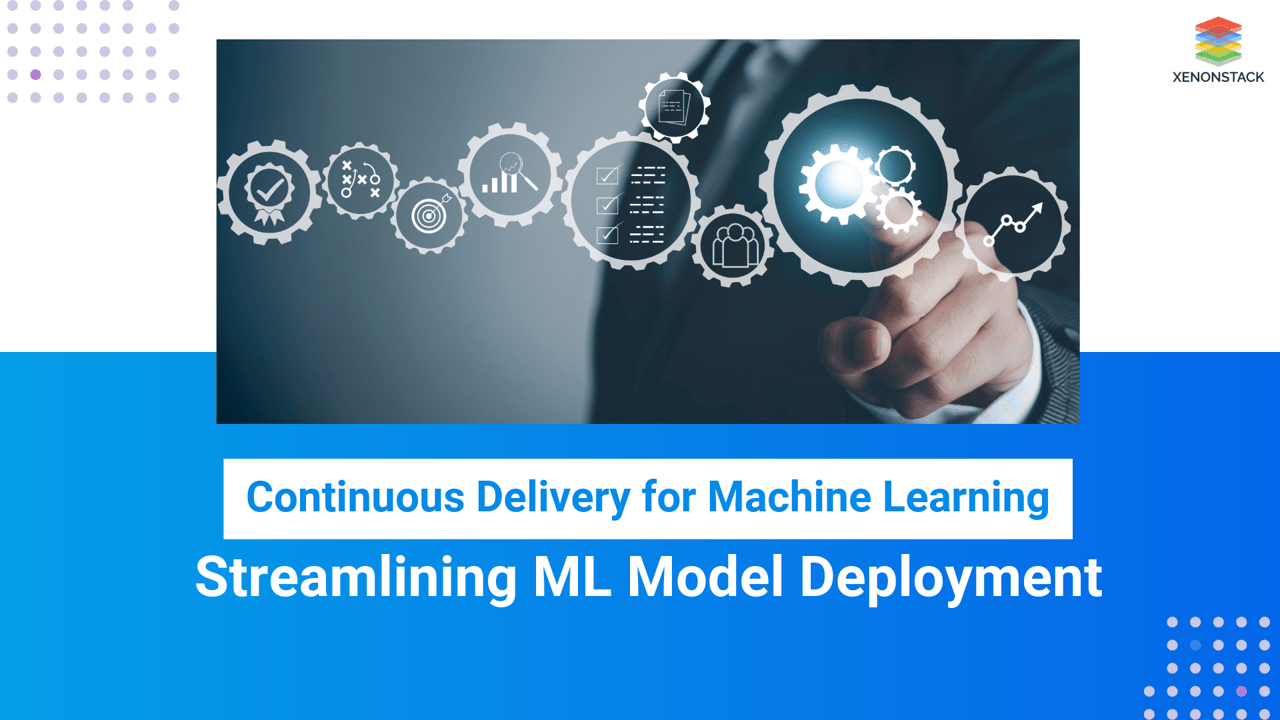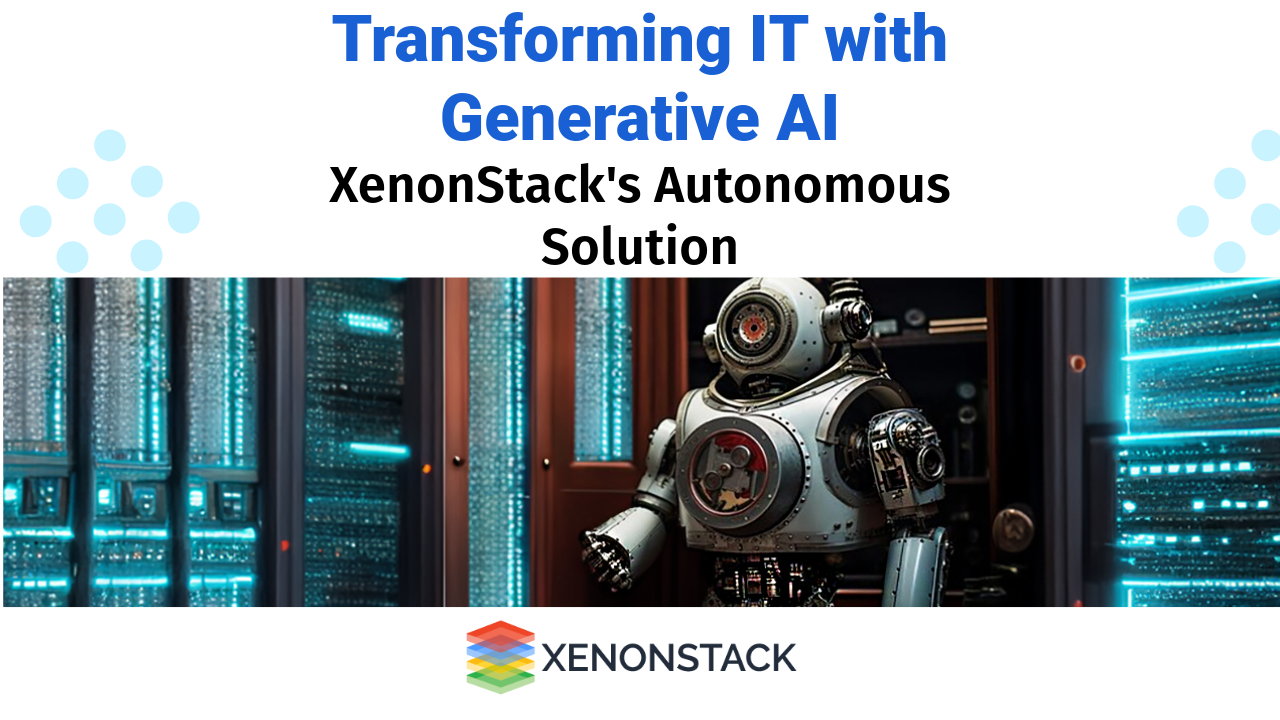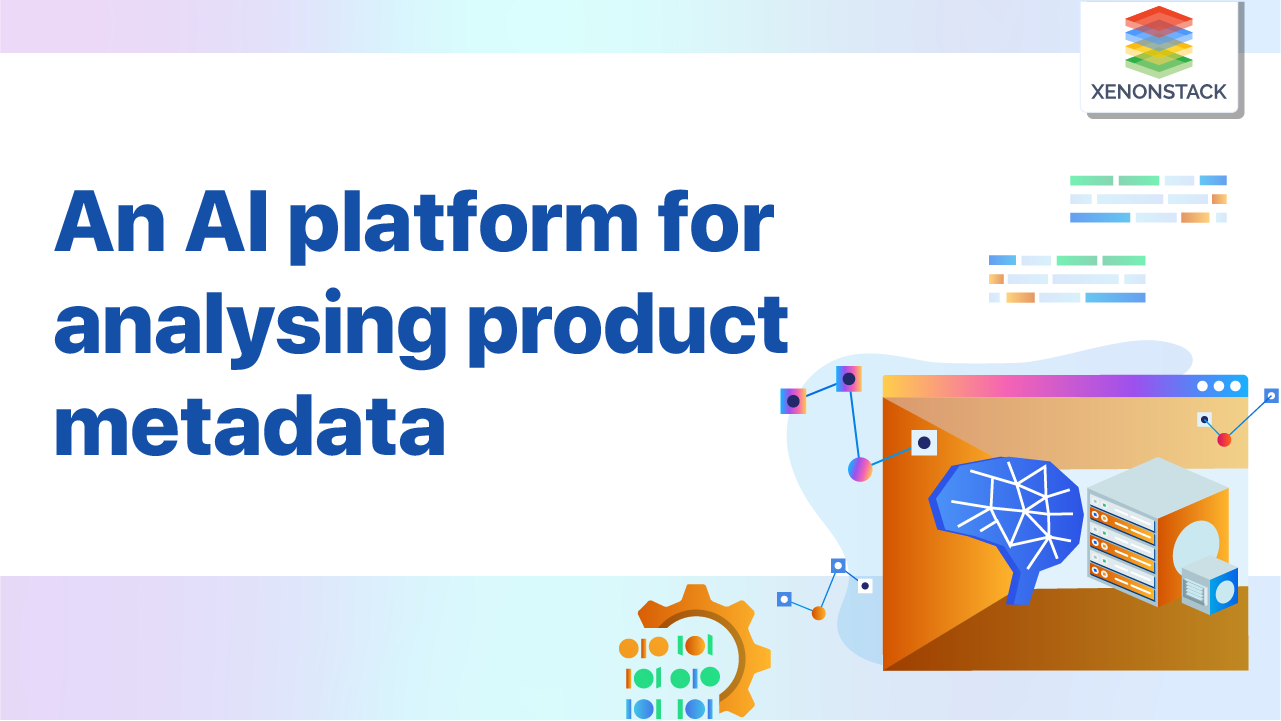
Overview of CD4ML
Continuous Delivery for Machine Learning (CD4ML) is a practice that enables cross-functional teams to develop, test, and release machine learning applications quickly and reliably. By integrating both software engineering principles with ML complexities, CD4ML automates the train-test-deploy cycle and guarantees that models are updated and deployed securely.
CD4ML is designed to cover the entire machine-learning pipeline. It is characterized by process continuity with minimal interruptions to the overall data capture process through modelling, experimentation, and governance processes, up to deploying models into production environments.
Key Principles of CD4ML
The effective implementation of Continuous Delivery for Machine Learning (CD4ML) relies on several foundational principles that optimize the workflow and enhance collaboration among teams. These key principles are essential for fostering an agile and resilient machine-learning environment.
Cross-Functional Collaboration
Thus, CD4ML focuses on organizational interaction between teams, being part of technical and business systems. It also becomes coordinated, so the data scientists must only worry about algorithms and clean data while the ML engineers concentrate on the scalability and distribution of the models. Data engineers have a role in ensuring that good data pipelines are well-developed and operations are on top of handling model performance issues that arise in production.
This level ensures better ownership of the ML life cycle, the coexistence of technical advancements with organizational objectives, and the Use of knowledge to integrate constant improvement across the departments.
Automation of Processes
Automation not only helps facilitate faster model deployment but also provides a far more consistent pipeline for the entire ML process. This means that from the point of data entering the system to the retraining of the models, teams can guarantee an efficient flow of updates. For example, the use of CI/CD concepts in combination with ML frameworks allows new data features or model architectures to be tested automatically instead of using an extensive amount of time and resources to test them manually. It also aids in the scaling of machine learning projects since organizations can manage a greater number of models while maintaining a high standard across the board.
Reproducibility and Version Control
The details established by reproducibility make further evaluation of ML experiments credible and, therefore, traceable, which is vital in ensuring quality and compliance in machine learning. This, along with well-defined certification procedures, is ironed out systematically with version control tools that are available for code (Git), data (DVC), and models (MLflow and others). This approach allows them to test freely, knowing they can always roll back to the previous version. This is particularly important in industries sometimes requiring audited trials, and the rationale behind the model’s decision is further useful in areas of finance and healthcare, to name but a few.
Continuous Monitoring and Feedback Loops
Ensuring that the deployed models are continuously monitored and are still valid in the presence of changing real-world conditions. This involves setting up alerts and dashboards to monitor metrics like accuracy, latency, and drift. Feedback loops help us get end-user or stakeholder insights that help teams iterate. Say, A/B testing can understand how the model would perform amongst different user segments; user feedback can help with the plugin. This enables the establishment of these loops that set an agile model development path, where models are continuously improved to improve their predictive power and relevance.
Challenges in Implementing CD4ML
Implementing Continuous Delivery for Machine Learning (CD4ML) presents various challenges that organizations must address to fully realize its benefits. These challenges are critical in understanding the complexities involved in deploying machine learning models effectively.

Figure: Challenges in Implementing CD4ML
Managing Model Complexity
While using complicated ML models in the pipeline, there are corresponding and more complicated issues that come with dealing with CD4ML. Model complexity could often be attributed to architecture intricacies, the use of more layers in artificial neural networks or the inclusion of many correlated features, which are cardinal reasons for poor scalability and interpretability. Also, there is unpredictability in the hyperparameters in production, and any slight changes in hyperparameters or, even further, training data make model behaviour complex. Teams require sound testing practices of models and related systems and explainable Artificial Intelligence tools to reduce model complexity and instability.
Handling Data Dependencies
The first is data dependencies, which are a fundamental challenge because the models need to make ongoing calls to data that have to be current and correct. This change can be gradual (data drift) or sudden (concept drift), affecting the model once the changes occur. Moreover, input consistency and quality throughout the training and production process are crucial, too. To address these dependencies, organizations must employ version control on the data sets, set data quality control measures, and set monitoring measures for emerging changes. Developing strong frameworks concerning data management reduces the hazards likely to occur and minimizes data dependencies.
Addressing Technical Debt
In ML systems, technical debt can snowball rapidly since experiments are done intensively, requirements are subjected to change frequently, and several ad hoc solutions are merged. Without such discipline, such shortcuts may lead to the creation of very fragile code, which makes it difficult to retune or audit models. More to the point, this issue is compounded by the factors characteristic of ML, including dependency on data pipelines, environmental reproducibility, and retraining. Technical debt implies the need to require and enforce such standards as proper documentation, developing actual components, and implementing and using a CI/CD pipeline for testing and monitoring dependencies. Therefore, if teams are to pay attention to such aspects of development as technical debt, they can easily guarantee the scalability, audibility, and flexibility of the adopted ML systems.
Machine Learning pipeline helps to automate Workflow and enable the sequence data to be transformed and correlated together in a model. Click to explore about our, Machine Learning Pipeline Deployment
Implementation Strategies
To achieve CD4ML, organizations have the following strategic actions that enable the efficient execution of CD4ML. 
Figure: Architecture diagram
Establishing Automated Training Pipelines
The training pipelines make the model development process more efficient through the steady process of model training, validation, and deployment. This automation is important in responding to data dynamics, especially when undertaking an update. By using tools such as Kubeflow, Airflow, or MLflow during the process, engineering tools keep the process as automatic as possible, reducing the error margin and allowing for quicker application deployment. By creating such pipelines, we guarantee that ML models are updated with new data and become more accurate and proper for usage in production.
Integrating CI/CD Practices
Utilizing CI/CD methodology in the environment of Machine Learning helps maintain the steady enhancement of the model’s quality, providing a more agile attitude toward such changes. CI/CD involves test automation, model checks, and rapid feedback on system deployment, hence adopting an iterative, responsive development culture. Instead, there are tools like Jenkins, GitLab, and DVC to help in the CI/CD pipeline by encouraging code and model versioning, code quality, and automated retraining. Implementing CI/CD best practices facilitates identifying problems at the early stage, quick and efficient communication, and enables high-quality models when the code and data are progressing.
Developing Robust Data Pipelines
Solid data architecture guarantees the absence of interruptions in data provision and the data’s quality throughout realistic ML development. These pipelines should include data scrubbing to correct, impute, and normalize data, as well as data pre-processing in terms of converting data into appropriate formats for training. Other tools for building autonomous data pipelines include Apache Kafka, Apache Beam, and Airflow, which guarantee the ML model's real-time data ingestion and integration. ‘High quality’ data feed lines improve efficiency by minimizing the time the model spends on the data and helping train the model with the correct data set that can mimic real-life situations.
Ensuring Effective Monitoring and Observability
Two key strategies are thus important for remembering how models are doing and to help maintain them when they are not effective anymore: monitoring and observability. Monitoring should also encompass measures such as model accuracy, latency and data drift, which point out anomalies as they develop. Metrics in this context can be aggregated and represented by tools such as Prometheus, Grafana or custom-build dashboards where teams can monitor KPIs, set up alerts in case of abnormality and configure auto-reply in the instance of retraining or rollback. Continuous observability helps in the constant adjustments of the many models across the teams based on the experience of the users and the data collected.
Tools and Technologies for CD4ML
CI/CD Tools for Machine Learning
Software tools that are usually applied when working on CI/CD for machine learning help in both model validation and deployment, as well as versioning. These tools include:
-
Jenkins: It makes redundant manufacturing of a model from scratch every time it has to be used.
-
CircleCI: This category offers cloud integration for automated and very fast application delivery.
-
GitLab CI provides clean and easy native adoption points into the ML development workflows for model deployment and versioning.
Model Versioning Solutions
Effective ML model management requires versioning solutions such as DVC (Data Version Control) and the MLflow solution. These tools enable:
-
Identifying the shifts in the parameters of a model, the code base to the dataset.
-
Enabling integration of different teams by making experiments repeatable.
Monitoring Tools and Frameworks
To maintain model performance in production, tools for monitoring include:
-
Prometheus: Conveys and archives metrics for instantaneous visibility.
-
Grafana: Outlines measurement and monitor tools and creates performance notification triggers.
-
DataDog: A monitoring system that enables observation of system and model activities in a production environment.
Case Studies and Best Practices
Successful Implementations of CD4ML
Companies that have successfully implemented CD4ML, particularly those that prioritize automated training pipelines and CI/CD practices, have experienced:
-
Reduced Time-to-Market: Reduced time between the different iterations and deployment of the models.
-
Improved Responsiveness: This improves the ability to adapt to new and emerging conditions when performing business requirements.
Lessons Learned from Industry Leaders
Key takeaways from industry leaders in CD4ML implementation include:
-
Cross-functional Collaboration: Data scientists, engineers, and operations teams have to work effectively together to support an ML system.
-
Documentation and Testing: Promoting clarity in documentation and creating good test frameworks are long-term standards that need to be upheld.
-
Iterative Improvements: The ongoing feedback and model update lead to consistency in the model’s accuracy and applicability across long periods.
Future Trends in CD4ML
Evolving Practices in Machine Learning Operations (MLOps)
MLOps is evolving to integrate more closely with broader DevOps practices. This convergence enables:
-
Faster model development and deployment cycles.
-
Greater automation and continuous feedback loops to improve model performance.
The Impact of AI on Continuous Delivery Processes
AI is transforming CD4ML workflows by:
-
Enhancing Automation: AI-driven tools automate more of the process, from data preprocessing to model retraining.
-
Improving Decision-Making: AI provides deeper insights into model performance, guiding future iterations for optimization.
Wrapping Up
Key aspects, including automation, reproducibility, and monitoring, thus improve machine learning operation by following CD4ML steps for a cyclic improvement mode. Setting up CI/CD pipelines and versioning and monitoring backpacks form the core tenets of resilient machine learning frameworks. Using CD4ML not only helps organizations to be more innovative but also offers them the ability to build and implement new avant-garde AI solutions across their enterprises. They determine long-run success in the continuously evolving and more competitive AI environment so that organizations can remain relevant when delivering business values.
.webp?width=1921&height=622&name=usecase-banner%20(1).webp)



